Boat Boat Go
Love Boat Party Life


How to Read Wind Indicators for Sailing: The Complete Guide
Sailing is a thrilling and challenging sport that requires a great deal of skill and knowledge. One of the most important skills for any sailor to learn is how to read wind indicators. Wind indicators, also known as wind vanes or telltales, provide crucial information about wind direction and speed, which is essential for making tactical decisions while sailing.
Table of Contents
Understanding Wind Direction
When it comes to sailing, understanding wind direction is crucial. The direction of the wind can affect the speed and course of a sailboat. Here are some key points to keep in mind when reading wind direction:
- Wind direction is measured in degrees clockwise from true north. For example, if the wind is coming from the north, it is 0 degrees. If it is coming from the east, it is 90 degrees.
- Wind direction can be affected by local topography, such as hills or buildings. This is known as wind shear.
- Wind direction can also be affected by the sailboat’s position relative to the wind. For example, if the sailboat is sailing directly into the wind, the wind will appear to be coming from the front of the boat. This is known as the “no-go zone.”
- One way to determine wind direction is to look at the direction of the waves. Wind will cause waves to form in a certain direction, which can indicate the direction of the wind.
- Another way to determine wind direction is to use a wind indicator, such as a wind vane or wind sock. These indicators will show the direction of the wind relative to the sailboat.
Types of Wind Indicators
Wind indicators are instruments that help sailors determine the direction and strength of the wind. There are various types of wind indicators available, each with its own advantages and disadvantages.
The Windex is a popular wind indicator that many sailors mount on the masthead of their boats. It is a simple device that consists of a vane or an arrow that points in the direction of the wind. The Windex is easy to install, lightweight, and affordable. It is also easy to read, even from a distance. However, the Windex is not very accurate in light winds, and it can be affected by the boat’s motion.
Telltales are small strips of fabric or yarn that are attached to the sail. They help sailors determine the direction and strength of the wind by showing the flow of air over the sail. When the sail is properly trimmed, the telltales should be streaming back smoothly. If they are fluttering or standing still, it means that the sail needs to be adjusted. Telltales are inexpensive, easy to install, and provide real-time feedback on sail trim. However, they can be difficult to see in low light conditions, and they can be affected by the boat’s motion.
Masthead Anemometer
A masthead anemometer is a more advanced wind indicator that measures the speed and direction of the wind at the top of the mast. It consists of a vane that points into the wind and a set of cups that spin in the wind. The speed and direction of the cups are measured by sensors, and the data is transmitted to a display unit in the cockpit. Masthead anemometers are very accurate, even in light winds, and they provide real-time feedback on wind speed and direction. However, they are expensive, difficult to install, and require regular maintenance.
Handheld Anemometer
A handheld anemometer is a portable wind indicator that measures the speed and direction of the wind at the location of the sailor. It consists of a small vane and a set of cups that spin in the wind. The speed and direction of the cups are measured by sensors, and the data is displayed on a small screen. Handheld anemometers are easy to use, affordable, and provide accurate readings. However, they require the sailor to hold the device steady, which can be difficult in rough seas, and they can be affected by the sailor’s body heat.
How to Read a Masthead Wind Indicator
A masthead wind indicator, also known as a Windex, is a device that is mounted on the masthead of a sailboat to show the direction of the wind. It is a simple and effective tool that helps sailors to adjust their sails and steer their boat in the right direction. Here are some tips on how to read a masthead wind indicator:
Observing the Vane
The vane of a masthead wind indicator is the part that moves with the wind. It is usually made of lightweight materials like plastic or aluminum, and it is designed to be sensitive to even the slightest breeze. When observing the vane, it is important to note the following:
- The direction of the vane: The vane will point in the direction that the wind is coming from. This is useful information for sailors who need to adjust their sails to take advantage of the wind.
- The angle of the vane: The angle of the vane relative to the boat’s centerline will tell you how much the boat is being pushed sideways by the wind. If the vane is pointing directly forward, the boat is sailing straight into the wind. If the vane is pointing to the side, the boat is being pushed sideways by the wind.
Interpreting the Tails
The tails of a masthead wind indicator are small pieces of fabric or plastic that are attached to the vane. They are used to show the relative strength of the wind. When interpreting the tails, it is important to note the following:
- The number of tails: Most masthead wind indicators have two or three tails. Two tails indicate light winds, while three tails indicate stronger winds.
- The position of the tails: The position of the tails relative to the vane will tell you the angle of the wind. If the tails are pointing straight back, the wind is coming from directly behind the boat. If the tails are pointing to the side, the wind is coming from the side of the boat.
By observing the vane and interpreting the tails, sailors can get a clear picture of the wind conditions and adjust their sails accordingly. With practice, reading a masthead wind indicator will become second nature, and sailors will be able to make quick adjustments to their sails without even thinking about it.
How to Read a Handheld Anemometer
When sailing, it is crucial to have an accurate reading of the wind speed and direction. Handheld anemometers are a great tool for this purpose. Here are the steps to follow to read a handheld anemometer:
Reading the Wind Speed
The wind speed is typically displayed in knots, miles per hour (mph), or meters per second (m/s). To read the wind speed on a handheld anemometer, follow these steps:
- Turn on the anemometer and wait for it to calibrate.
- Hold the anemometer up in the air, away from your body, at arm’s length.
- Point the anemometer directly into the wind.
- Read the wind speed displayed on the screen.
Determining the Wind Direction
The wind direction is typically displayed in degrees or cardinal directions (e.g., N, NE, E, etc.). To determine the wind direction on a handheld anemometer, follow these steps:
- Look at the display and note the wind direction.
Some handheld anemometers also have a wind vane or arrow that points in the direction of the wind. This can be helpful for quickly determining the wind direction without having to read the display.
How to Read a Windex Wind Indicator
Interpreting the reference arms.
The Windex wind indicator consists of a vane that rotates around a vertical axis and two reference arms that extend horizontally from the vane. The reference arms are designed to provide a visual reference point for the direction of the wind relative to the heading of the boat.
To interpret the reference arms, imagine them as the arms of a clock. The arm that is pointing to the left of the boat is the 9 o’clock arm, and the arm that is pointing to the right of the boat is the 3 o’clock arm. If the wind is coming from the direction of the 9 o’clock arm, it means that the wind is coming from the port side of the boat. If the wind is coming from the direction of the 3 o’clock arm, it means that the wind is coming from the starboard side of the boat.
Reading the Wind Direction
To read the wind direction using the Windex wind indicator, you need to combine the information provided by the reference arms with your knowledge of the boat’s heading.
If the boat is heading directly into the wind, the vane of the Windex wind indicator will be pointing straight up, and the reference arms will be horizontal. In this position, the 9 o’clock arm will be pointing to the port side of the boat, and the 3 o’clock arm will be pointing to the starboard side of the boat.
If the boat is on a port tack, the wind will be coming from the starboard side of the boat. In this case, the vane of the Windex wind indicator will be pointing to the port side of the boat, and the 9 o’clock arm will be pointing down towards the water. The 3 o’clock arm will be pointing up towards the sky.
If the boat is on a starboard tack, the wind will be coming from the port side of the boat. In this case, the vane of the Windex wind indicator will be pointing to the starboard side of the boat, and the 3 o’clock arm will be pointing down towards the water. The 9 o’clock arm will be pointing up towards the sky.
By combining the information provided by the reference arms and your knowledge of the boat’s heading, you can accurately read the wind direction using the Windex wind indicator.
Using Wind Indicators for Sailing Strategies
Understanding how to read wind indicators is crucial for any sailor who wants to improve their performance on the water. In this section, we will explore how to use wind indicators to optimize sail trim and choose the best course.
Optimizing Sail Trim
Sail trim is the art of adjusting the sails to achieve the most efficient and effective use of the wind. Wind indicators provide valuable information about the direction and strength of the wind, which can help sailors to optimize their sail trim. Here are some tips for using wind indicators to optimize sail trim:
- Keep a close eye on your wind indicator to detect changes in wind direction or strength.
- Adjust your sails accordingly to maintain the optimal sail shape and angle to the wind.
- Use the telltales on your sails to help you determine whether your sail trim is correct.
- Experiment with different sail trim settings to find the one that works best for the current wind conditions.
Choosing the Best Course
Choosing the best course is essential for reaching your destination as quickly and efficiently as possible. Wind indicators can help you to choose the best course by providing information about wind direction and strength. Here are some tips for using wind indicators to choose the best course:
- Look for areas of the water where the wind is stronger or more consistent.
- Use your wind indicator to determine the optimal angle to the wind for your boat.
- Adjust your course accordingly to take advantage of the wind direction and strength.
- Keep an eye on your wind indicator to detect any changes in wind direction or strength that may require you to adjust your course.
Maintaining Your Wind Indicators
Maintaining your wind indicators is crucial to ensure accurate readings and reliable performance. Here are some tips to keep your wind indicators in top shape:
1. Regular cleaning
Wind indicators can accumulate dirt, dust, and grime over time, which can affect their accuracy. Regular cleaning with a soft cloth and mild detergent can help remove any buildup and keep the indicators functioning properly.
2. Lubrication
Wind indicators often have moving parts that require lubrication to operate smoothly. Applying a small amount of silicone or Teflon lubricant to the moving parts can help reduce friction and prolong the life of the indicators.
3. Check for damage
Regularly inspect your wind indicators for any signs of damage, such as cracks, chips, or bent parts. Any damage can affect the accuracy of the readings and compromise the safety of your sailboat. If you notice any damage, replace the indicators immediately.
4. Calibration
Wind indicators can drift out of calibration over time, especially if they are exposed to extreme weather conditions. Regularly calibrating your indicators can help ensure accurate readings and prevent any mishaps on the water.
Proper storage is essential to keep your wind indicators in good condition. When not in use, store them in a dry, cool place away from direct sunlight and extreme temperatures. This will help prevent any damage or deterioration.
In conclusion, reading wind indicators is a crucial skill for any sailor, and with the right tools and techniques, it can be mastered. The key is to understand the different types of wind indicators available and how to interpret the data they provide.
Related posts:
- The Impact of Biting House Flies on Your Health During Your Pontoon Boat Party on the Beach
- How Fast Can A Boat Go Depending On Horsepower?
- How Far Can You Transmit with a 25 Watt VHF Radio? Explained
- The Legalities of Bringing Your Dog on a Boat: Understanding Local Regulations
Terms and Conditions - Privacy Policy
Wind and Weather Tools
The best sailboat wind direction indicators, wind speed meters & anemometers.
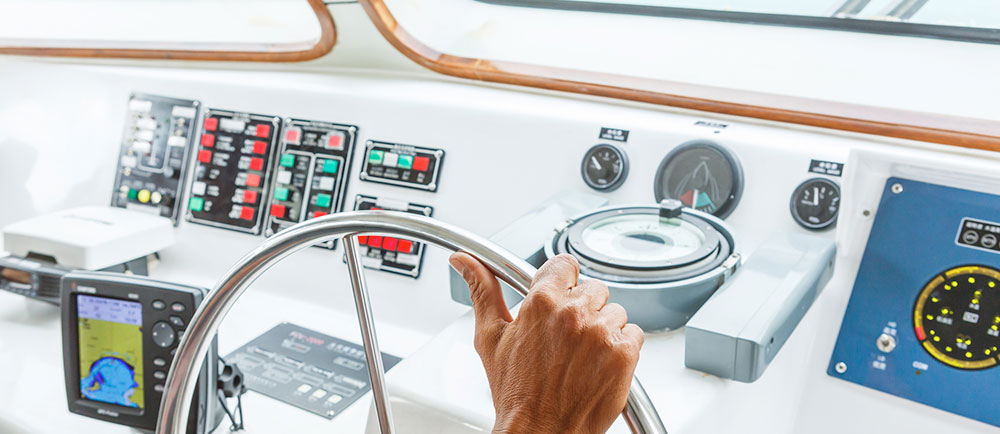
If you’re a sailing enthusiast you probably are no stranger to needing accurate wind speed and direction information. There are a slew of wind meters available today for just about every need: from handheld anemometers (wind speed meters), to sailboat mounted wind direction indicators and more. In this article, we’re going to do a roundup of the best wind meters for sailing, wind vanes for sailboats, the best anemometers for sailing, and more.
The best wind direction meters for sailing

WeatherHawk SM-18 SkyMate Hand-Held Wind Meter, Yellow
This floating anemometer is one of the best wind speed meters for sailing. It can measure wind speeds ranging from 0.5 miles per hour all the way up to 99MPH at user-selectable intervals of every five, ten, or 13 seconds (in addition to calculating the average wind speed and tracking peak speed for you). Plus it can also measure wind temperature and wind chill in both Fahrenheit and Celsius. One other nice feature about this sailboat anemometer is that it comes with a durable build and a bright yellow flip-shield. Naturally, it’s also water-resistant so if it falls into the water you’ll be able to easily spot it floating. Also comes with a loop for a lanyard or wrist strap if desired. A belt sheath is also available for this product.
For more handheld anemometers, see our full article: The Best Portable Anemometers & Portable Weather Meters .

Cape Cod Wind Speed Indicator for Sailboats
Cape Cod Wind & Weather instruments have been a staple of sailors since the company was founded in 1939. With an emphasis on quality American-made wind speed indicators, these gauges are built to last.
This wind speed indicator for sailing can mount on your sailboat either vertically or horizontally and it comes with a spinning cup wheel which can be mounted wherever you like (the supplied cable is 50 feet long and comes with a mounting bracket and screws). For wireless anemometers, see our related article: What is the Best Wireless Anemometer & Wireless Wind Speed Meter?
For decades Cape Cod Wind & Weather has supplied sailors with reliable real-time sailboat wind direction indicators, and this wind speed meter for sailing is no exception.
This unit measures wind speed from zero to 100 miles per hour and comes with a ten-year limited warranty. Pairs well with Cape Cod’s Wind Direction Indicator which matches with a lighted dial interface for wind direction metering.
Davis Instruments Windex 15 Suspension Bearing

This weather vane for sailboats mounts on your masthead through bolts or a tap and it provides an easy-to-read wind direction indicator. It’s one of the most popular sailing wind vanes on the market and this particular Davis Windex model is intended for medium to larger boats (the vane itself is 15 inches long; a smaller model exists for smaller boats). This model has what Davis calls a bird-proof spike to keep seagulls from trying to land on the instrument while you’re sailing. The vane itself features tabs that reflect in order to remain visible at night or in dark conditions.

Davis Instruments Spar-Fly Wind Indicator for Yachts and Dinghies
This compact sailboat wind direction indicator comes in a bright red color and has both a top and side mounting option. It measures 15 inches long, is highly visible, and weighs an astonishing 1.25oz for a highly responsive level of accuracy even in light wind conditions. The Spar Fly sailing wind vane is intended for sailing dinghies or small yachts and has great reviews.

Raymarine i60 Wind System with Masthead Instrument
The Raymarine i60 Wind System measures wind speed and direction as well as a slew of other readings with an easy-to-read digital-dial hybrid display and a masthead mounted instrument. It comes mounting gear and a 100 foot long (30 meters long) cable to connect the wind meter to the display. This is one of the best anemometers for sailing. Can measure wind speed/direction, maximum wind speed (peak), Beaufort scale, Tack and VMG. Plus it has a red backlight for dark conditions.
Frequently asked questions about windvanes for sailboats & the best anemometers for sailing
What features should I look for when shopping for a wind meter for sailing?
The best wind meters are often mounted anemometers made specifically for boating which have a display you can attach to your console. We have a few such wind speed meters for sailboats listed in this article, above.
Handheld anemometers for sailing usually float, are brightly colored, and are waterproof in case they fall into the water. They may also contain temperature gauges and loops for wriststraps or lanyards.
No matter the type of anemometer you choose, a large easy to read at a glance display is also especially useful for sailing anemometers.
What is an anemometer?
An anemometer is simply a wind speed meter. Some anemometers have digital displays, others have dial displays. The most sophisticated anemometers can also measure a variety of other metrics like temperature, dew point, humidity, barometric pressure, and so forth. Advanced anemometers can even give a personalized weather forecast for any location (especially useful if you’re using an anemometer in a spot where there isn’t a reliable weather forecast). Anemometers for sailing are useful because they give a clear and accurate reading of wind speed and direction. For more information about what anemometers are, read our related article: What is an Anemometer and What is it Used For?

Please verify you are a human
Access to this page has been denied because we believe you are using automation tools to browse the website.
This may happen as a result of the following:
- Javascript is disabled or blocked by an extension (ad blockers for example)
- Your browser does not support cookies
Please make sure that Javascript and cookies are enabled on your browser and that you are not blocking them from loading.
Reference ID: 3ca12bff-eb77-11ee-a0bd-28f03bdbd077
Powered by PerimeterX , Inc.

How To Read The Wind When Sailing

Last Updated by
Daniel Wade
June 15, 2022
Understanding wind direction is a sailor's medium. If you would be a sailor, you must learn how to read or determine the wind direction during sailing. It is a rare ability in the 21st century because most sailors depend on technical gadgets to understand the direction and speed of the wind.
Winds are named for the quarter from which they usually blow such as a wind blowing from north to south is called north wind. But the direction of the wind is not always the same so as you sail, you will need to keep track of where it is coming from.
Table of contents
How to read the wind when sailing?
The most important aspects of wind sailing are reading the wind direction and wind speed. The direction of the wind is like a sailor's NorthStar. Clues to the wind are always around us. Waves are pushed along by the wind but only the small ripples ( series of small waves) on the surface which are always perpendicular to the direction of the wind helps to read it. There are many ways to determine the wind direction, many sailors use fancy electronic gadgets and some others use traditional methods.
Traditional methods
- A wet finger
The sailor himself is the best indicator. To determine the direction of the wind by using a wet finger is one of the easiest ways. Wet your finger and hold it up. The side of the finger that will dry faster and feel cold as compared to another side shows the direction of the wind.
- Wind on your face
This is another method used to determine wind direction. Keep your face towards the wind's general direction and turn slowly from one side to another, as you turn around you will feel the wind hitting your face and the wind hitting on your face head-on helps to find the rough idea of where the wind is blowing from. To make your reading more accurate, you have to rely on your ears. If the wind is blowing from the left side, the left ear will hear more wind noise from the right ear. At the point when you hear the same amount of wind noise in both the ears then this will show that you are facing towards the wind. It does not work if you are standing behind a dodger or cloth you have to be in a free area where you can feel the unobstructed wind on your face.
- Install a Yarn
Make your own wind indicators on the boat. Install a yarn to the shrouds as high as possible. The yarn will stream in the direction of the wind.
- Reading the sails
The sails use the wind and also determine in which direction the wind is blowing. When gripping too strong, the luff (the edge of a fore-and-aft sail next to the mast) will curl towards the boat. This will result in make a large area on the luff which is swelling in rather than out. If you are sheeted all the way means that you are aiming as far upwind as possible.
Technical methods
- Electronic Masthead Wind Sensors
These are simply a wind vane attached or linked to a potentiometer. When the wind vane moves towards the wind, its position automatically turns into an electrical signal which displays on the gauge in the cockpit. These gauges are so simple like a needle pointing towards the wind direction over an illustration of the vessel or a digital screen that calculates true wind and obvious wind direction. These instruments will displace all the guesswork from the sailing and shows from where the wind is exactly coming from in relation to the boat.
This device is an alternative to an electrical instrument. This is a highly sensitive device that works on the same principle as the wind point but without any complexity of electronics. Many boats use both the Windex and the wind points. One is placed on the front of the mast and another is back on the mast. This provides a great mechanical backup in case the electronic system failed. The boxes and the wind vane of the Windex are painted with high visibility paint. This will help in determining where the wind is exactly coming from.
No doubt, both of the instruments work wonderfully, but as you all know everything has its own hidden drawbacks. The electronic sensors may be exposed to elements and will eventually be failed. This will make the combination of Windex and wind point more popular. The drawback of Windex is that you have to look continuously towards the masthead to read it, this will hurt your neck. So, you will need a hole or window cut to see the masthead from the helm.
There is one other method through which we can read the wind which is " The Weather Chart"
This is also known as the synoptic chart or surface pressure chart. We can read these charts before going out to sailing and this is also a great way to predict the wind speed and the direction of the wind. On the weather charts, there are circular lines called Isobar. Their joining point signifies the area of the same biometric pressure. The wind is always moving from high-pressure to low-pressure regions. When the isobars are close together the wind in these areas is stronger and when they are far apart than the wind in these areas is calmer. when you predict the wind direction from the weather chart note that in high-pressure areas the wind will move in a clockwise direction and in low-pressure areas the wind will move in an anti-clockwise direction.
If you are stuck in a storm and the masthead sensors are blown off. No one is there to tell you where the wind is blowing from. So, in that case, you have to move towards traditional methods to figure out the wind direction.
Related Articles
I've personally had thousands of questions about sailing and sailboats over the years. As I learn and experience sailing, and the community, I share the answers that work and make sense to me, here on Life of Sailing.
by this author
How to Sail
Most Recent

What Does "Sailing By The Lee" Mean?
October 3, 2023

The Best Sailing Schools And Programs: Reviews & Ratings
September 26, 2023
Important Legal Info
Lifeofsailing.com is a participant in the Amazon Services LLC Associates Program, an affiliate advertising program designed to provide a means for sites to earn advertising fees by advertising and linking to Amazon. This site also participates in other affiliate programs and is compensated for referring traffic and business to these companies.
Similar Posts

How To Choose The Right Sailing Instructor
August 16, 2023

How To Sail From California To Tahiti
July 4, 2023

How To Tow A Skier Behind A Boat
May 24, 2023
Popular Posts

Best Liveaboard Catamaran Sailboats
December 28, 2023

Can a Novice Sail Around the World?
Elizabeth O'Malley

4 Best Electric Outboard Motors

How Long Did It Take The Vikings To Sail To England?

10 Best Sailboat Brands (And Why)
December 20, 2023

7 Best Places To Liveaboard A Sailboat
Get the best sailing content.
Top Rated Posts
Lifeofsailing.com is a participant in the Amazon Services LLC Associates Program, an affiliate advertising program designed to provide a means for sites to earn advertising fees by advertising and linking to Amazon. This site also participates in other affiliate programs and is compensated for referring traffic and business to these companies. (866) 342-SAIL
© 2024 Life of Sailing Email: [email protected] Address: 11816 Inwood Rd #3024 Dallas, TX 75244 Disclaimer Privacy Policy
JavaScript seems to be disabled in your browser. For the best experience on our site, be sure to turn on Javascript in your browser.
- My Wish List
- Compare Products
- Create an Account
INTRODUCING RONSTAN ORBIT WINCHES™
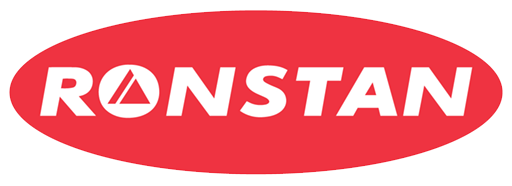
"The WINDEX® Wind Direction Indicator is an indispensable tool for sailors of all levels since it allows instant and accurate wind information at all points of sail"
The WINDEX® is a Swedish invention from 1964 that is currently sold in more than 40 countries across five continents. In total more than 1,500,000 WINDEX Wind Direction Indicators have been sold over the last 45 years.
The different WINDEX models are found at the top of masts on every type of sailboat from Americas Cup boats to racing dinghies, and everything in between.
It is one of the most well known and recognised yachting products. The inventive and superior design of the WINDEX Wind Direction Indicator has allowed it to stay virtually unchanged for more than 40 years.
Windex® Products
Need some advice.
Official Sponsors of the Australian Sailing Team

- Free Newsletter
- Give a Gift

How to Sell Your Boat

Cal 2-46: A Venerable Lapworth Design Brought Up to Date

Rhumb Lines: Show Highlights from Annapolis

Open Transom Pros and Cons

Leaping Into Lithium

The Importance of Sea State in Weather Planning

Do-it-yourself Electrical System Survey and Inspection

Install a Standalone Sounder Without Drilling

When Should We Retire Dyneema Stays and Running Rigging?

Rethinking MOB Prevention

Top-notch Wind Indicators

The Everlasting Multihull Trampoline

Check Your Shorepower System for Hidden Dangers

How Dangerous is Your Shore Power?

DIY survey of boat solar and wind turbine systems

What’s Involved in Setting Up a Lithium Battery System?

The Scraper-only Approach to Bottom Paint Removal

Can You Recoat Dyneema?

Gonytia Hot Knife Proves its Mettle

How to Handle the Head

The Day Sailor’s First-Aid Kit

Choosing and Securing Seat Cushions

Cockpit Drains on Race Boats

Re-sealing the Seams on Waterproof Fabrics

Safer Sailing: Add Leg Loops to Your Harness

Waxing and Polishing Your Boat

Reducing Engine Room Noise

Tricks and Tips to Forming Do-it-yourself Rigging Terminals

Marine Toilet Maintenance Tips

Learning to Live with Plastic Boat Bits
- Sails, Rigging & Deck Gear
- Marine Electronics
Deck-level Wind Vanes
Not just for small boats, these sensors put the fun back in shifty winds.
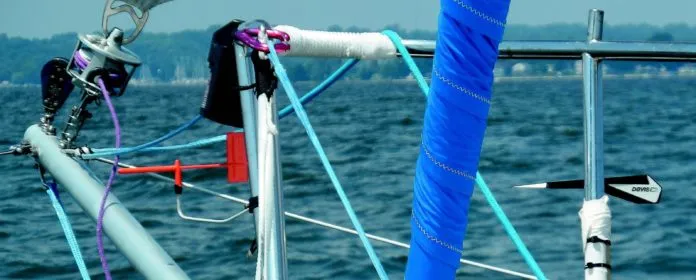
There are two primary wind indicators on a sailboat. First, we watch the sails. Sailing to windward we watch the jib for luffing and for flow on telltales.
On the main we watch for backwinding near the luff and for good flow on the leach ribbons. Off the wind we are more likely to watch the masthead fly, leading to an epic crick in the neck. More importantly, when sailing in a real breeze we like to keep our eyes near to the water, watching for other boats, the dip of the bow when pressed hard, and scanning for approaching gusts. Theres no time for more than a glance at the masthead. Ribbons on the shrouds help, but often they are too strongly influenced by dodgers and the sails themselves.
Single sail boats, such as Lasers and Optimus dinghies often clamp wind indicators on the forward side of the mast (see Practical Sailor, January 2018, Top Notch Wind Indicators ). Without a jib to interfere with windflow or to luff at every wind shift (thus serving as a wind vane), they give a real-time estimate of wind direction. Thirty years ago Frye developed the habit of watching a Davis Telo-cat indicator that hung suspended under the forestay bridle of his beach catamaran. There it was safe from sheets and sails and directly in sight as he watched the lee bow for signs of submarining, one of the greatest concerns of a beach cat sailor on a fast reach.
As he moved on to larger catamarans, he always found a place to mount the indicator on one of the bows. On his Stiletto 27, the conventional masthead flies mounted at the end of the bow worked fine. That was because, unlike many monohulls or other catamarans, the bows on the Stilletto are far outboard and extend three feet forward of the forestay, where they are relatively undisturbed by air flow.
It was a fast boat and the spinnaker was jibed inside (the sheets passed between the tack and the forestay) like a jib. As is the case with most performance cats, the boat moved so fast off the wind that the apparent wind was rarely if ever dead astern. Instead, the fastest course to steer in terms of velocity made good (VMG) often involved tacking downwind.
When he moved up to a cruising catamaran (PDQ 32), he developed an unbreakable wind indicator ( PS January 2018 ) that could withstand a regular flogging from spinnaker sheets. With his current trimaran (Corsair F-24) he has settled on a pair of wind indicators, port and starboard, since the deck-sweeping genoa blocks the view of the indicator on the off tack. This dual arrangement also ensures at least one of the flies is working in relatively clean air, undisturbed by the jib. On many boats these flies would be vulnerable to sheets during tacking, but in the case of the Corsair, they are protected from reacher and spinnaker sheets by the up-haul used to raise and lower the hinged bowsprit. As the sheets cross the bow, the up-haul keeps them clear of the flies.
Are these sensitive sensors affected by air flow over the jib? Certainly, but they are still extremely useful for adjusting to gusts and shifts. The mounting arm holds them out in front of the jibs luff, and by mounting them low on the bow rail, they escape most of the disturbed air. Even when the jib is close hauled, the distance between the fly and the sail on Fryes boat is at least two feet. On many cruising boats they can be mounted well below the jibs luff, allowing even greater clearance.
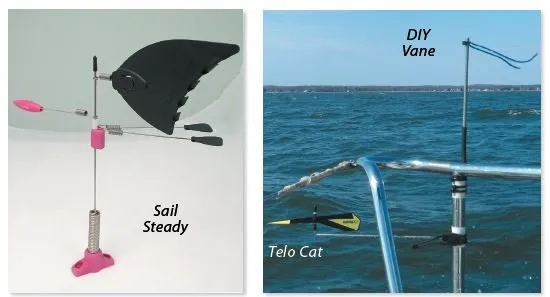
Observations
The primary function of these bow vanes is not fine-tuning or fine steering adjustments. These are made based on sail-mounted telltales and the look of the sails themselves. Their true value is showing gross changes in wind direction. As you pass through a tack or jibe, what is the approximate wind angle?
A leeward wind shift has stalled the sails, but how big an adjustment is ideal? You’ve just born away in a strong gust to stall the sails, but how far aft has the apparent wind moved?
Sure, you could glance at the masthead, but when things are happening fast, thats not where your eyes should be. When bearing off you should be watching the bow. When attacking or jibing at speed, the movement of the headsail across the foredeck, the motion of the boom, and the position of other boats are more important than looking up.
Just as importantly, new crew and beginning sailors love them. When anchoring or hoisting sails they don’t need to split their attention; Just keep that vane pointed forward. When sailing they avoid disorientation by looking in too many directions. Remember teaching your kid to drive and watching in horror as the car began to turn every time they turned their head to check a blind spot?
Other than preventing them from fouling with ropes, the greatest challenge can be reading them. It’s easy to judge the angle of a masthead fly when looking up, and bow flies are easy to read on a dinghy or beach cat because they are close. But when they are 20 feet away and viewed from the same level, judging the exact angle is difficult. Indicator arms help.
Deck-level Windvane Options
Weve tried several different brands and models and found something of merit in each of them. Our main criteria was durability, but we did not discern a great difference. All of the vanes are vulnerable to a hard wack, so in the end, the best vane for you will be the one that fits your installation needs.
DIY unbreakable
The do-it-yourself yarn indicator that we featured in January 2018 is perfect for locations where a sheet or sail may find the indicator. It bends rather than breaks. On the other hand, the yarn is sometimes plastered down by rain or spray, sometimes tangles, and the direction can be hard to read.
Bottom line: This is the Best Choice if everything else breaks, but otherwise inferior.
Sailsteady Indicator
Designed by a Laser sailor, the springy Sailsteady is the only vane sensor weve seen that can withstand the abuse of slatting sails and dragging sheets.
We mounted it on the deck of our Javelin and found that a jib will hang up on the vane in light airs, but if theres a good breeze, the vane flops down, lets the line or jib pass, and springs back into action undamaged. It is most useful on small one-designs that have clear foredecks.
Bottom line: Made in the United Kingdom, the Sailsteady offers an option for small boat sailors concerned about deck-sweeping jibs. It comes with one extra vane.
Davis Black Max
Based on the very successful Telo-cat, this black and yellow indicator has proven its durability over may decades of rough use. The clamp is optimized for a 1 -inch mast, but adjusts down to 3/4-inch pulpit rails. We wish the strut was steel rather than carbon, allowing it to be bent for leveling.
Bottom line: Recommended.
Davis Telo-cat
We started with this one over 30 years ago. Specifically designed for beach catamarans, it attaches to the forestay turnbuckle, though the bracket can be adjusted to other configurations. This location is safe from sheets on a beach cat, even with a chute. We used these for decades, always getting multiple seasons from them.
Bottom line: Recommended for beach cats.
Schaefer Marine Little Hawk MK II
Easy to mount, extremely sensitive and highly visible, it looks a little fragile. That said, we havent been able to break one in two seasons. It remains the most sensitive after a year of blasting through waves, even more sensitive than our masthead fly.
Bottom line: Our personal favorite and Best Choice.
Schaefer Marine Cat Hawk
Like the Telo-cat, the mounting is designed for the forestay turnbuckle of a beach cat, but we screwed it to a home built rail mounting block and took it sailing. It was more responsive than the Black Max, steadier than the Little Hawk MK II, and easier to read accurately. We wish the tail was more conspicuous; we may spray the tail yellow. The indicator arms were a little too easy to move, but were also the easiest to read. We wish it came with the Little Hawk Mark II mounting, though you can always bend the wand and secure it somehow.
Bottom Line: Recommended.
While not as unbreakable as the DIY version, it is easy to read and the top-and-bottom stays make it quite damage resistant. Bottom line. We wish it were more responsive.
We’ve been sailing with bow wind indicators for 35 years and we’ve yet to figure out why they are not popular outside the world of beach cat and dinghy sailing. They don’t replace a masthead fly or tell tales, but we all use the same wind and what could be more valuable than knowing where the wind is coming from?
Mounting options is clearly a consideration when choosing a deck-level vane. Several of the models we tested have deck mounts as well as spar mount, and rail mounts.
- The the blue up-haul line protects the sensors on Drew Frye’s boat.
- The C-Vane easily attaches to 1-inch rail
- The mounting arm on the Schaefer Cat Hawk keeps in clean air.
- The simple Mini Hawk II is perfectly balanced. It’s large vane responds well in light winds.
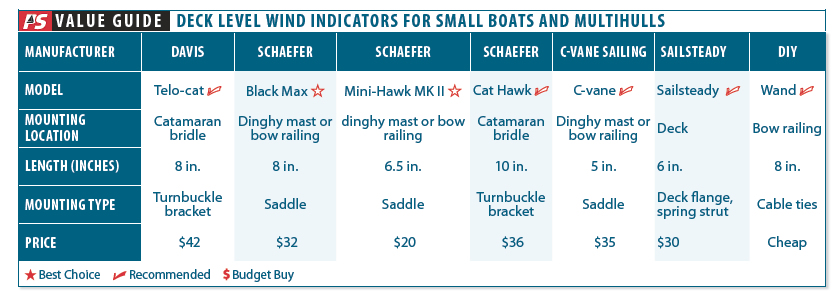
RELATED ARTICLES MORE FROM AUTHOR
Leave a reply cancel reply.
Log in to leave a comment
Latest Videos

40-Footer Boat Tours – With Some Big Surprises! | Boat Tour

Electrical Do’s and Don’ts

Bahamas Travel Advisory: Cause for Concern?

Island Packet 370: What You Should Know | Boat Review
- Privacy Policy
- Do Not Sell My Personal Information
- Online Account Activation
- Privacy Manager
× You are using an outdated browser. Please upgrade your browser to improve your experience.
We Ship Worldwide! | FREE SHIPPING! for US Continental orders over $99. Click for details.

Shopping Cart
Your cart is currently empty..
FREE SHIPPING! for US Continental orders over $99 click for details
Sailboat Wind Indicators

Sometimes old ways are the best ways. If fancy wind systems aren't up your alley, a traditional wind vane might be what you need. At MAURIPRO Sailing store we carry wind indicators for every size boat, so you will be able to read the wind with ease. We have wind indicators from top manufacturers for dinghies and keelboats alike, so you can find one that fits your boat. Telltales or wind indicators attached to the shrouds are great for sensitive light wind sailing, as well as making sure the wind is at the right angle when wing on wing sailing downwind.
Finally, even with a state-of-the-art electronics system, nothing beats the responsiveness and effectiveness of quality tell tales on the sails. When sailing with telltales, you can always get the maximum performance out of your boat.
MAURIPRO Sailing, your direct access to Sailboat Wind Indicators and all your other sailing and boating needs.
Copyright © 2024 MAURIPRO Sailing LLC.

Windex® 15 | 15-40 feet sized boats
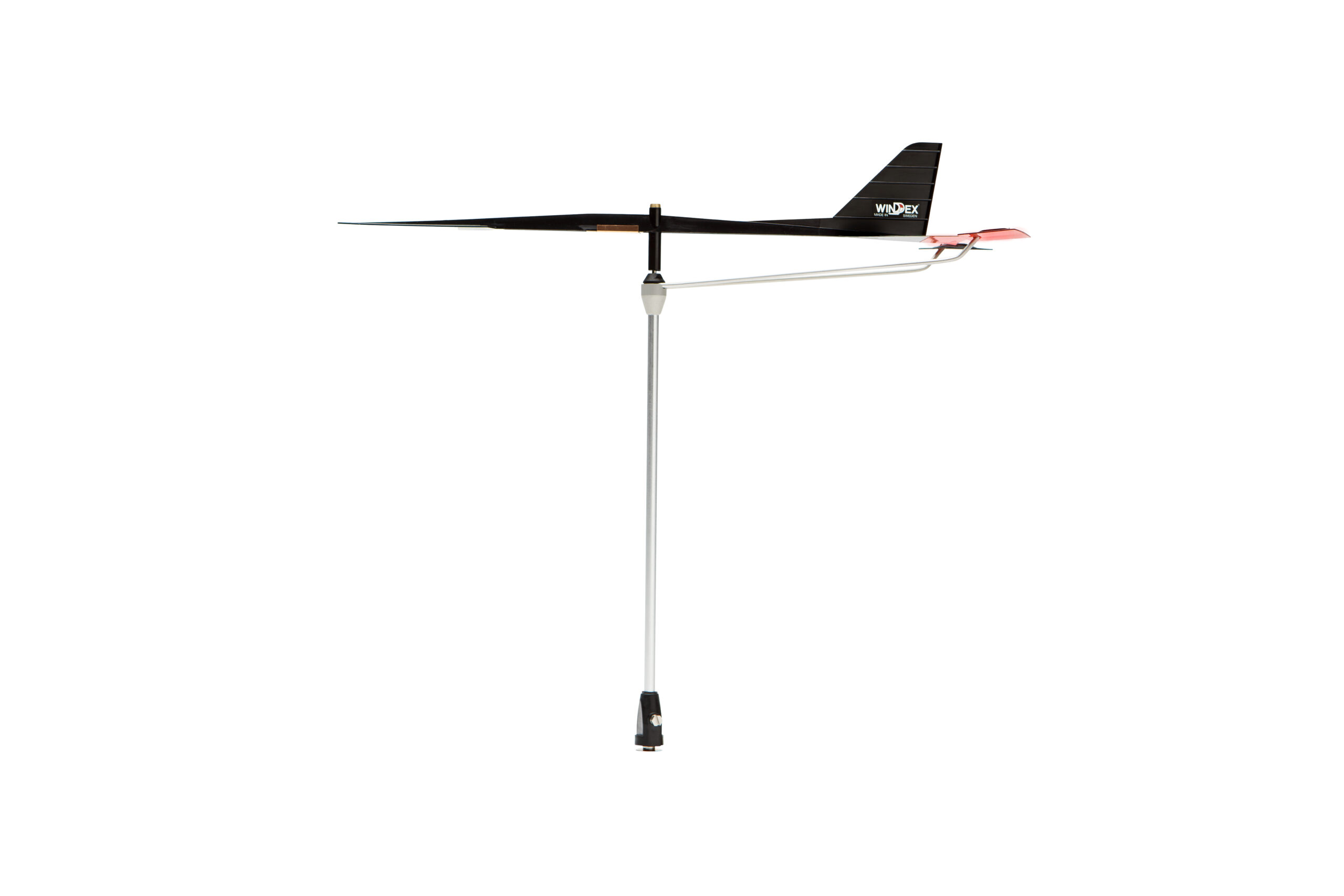
587.00 kr
WINDEX 15 is the perfect choice for all family and racing boats from about 29 to 40 feet. The WINDEX Wind Indicator offers exceptionally good performance. The secret is the needle that rests in a sapphire layer, which means that Windex 15 finds the shifts even in extremely weak winds.
- Reflector tape on the vane and tacking tabs make Windex® 15 easy to see day and night. Windex® vanes are sturdy and when installed properly, offer many years of use. They have been wind tunnel tested to wind speeds of 40 m/s

Description
- Windex® 15 will be the perfect choice for all cruising and racing boats from 5-12 (15-40 feet) meter.
- Windex® wind vanes for sailors that need exceptional performance at the best value of any wind indicator worldwide. The secret is in the sapphire jewel suspension bearing, large fin-low inertia vane, and easy-to-read, fully adjustable tacking tab system.
- Windex® wind vanes remain the top performing wind indicators in the world and offers exceptional performance with great value.
- Provides accurate apparent wind direction information for cruisers and racers
- Saphire jewel suspension bearing makes the device sensitive in light air and responsive in heavy air
Windex® 15 with BirdSpike data:
Vane length 380mm (15”) Height 370 mm (14,5”) Weight 100 gr (3,6 ounces) It has a 5/16” thread or drill a 8 mm hole and mount with washer and nut
Here is a video of how to assemble a Windex 15
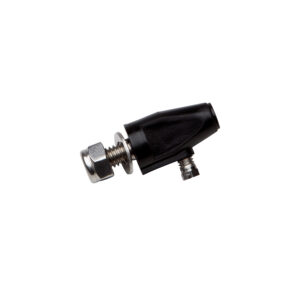
Mast socket for Windex® 15
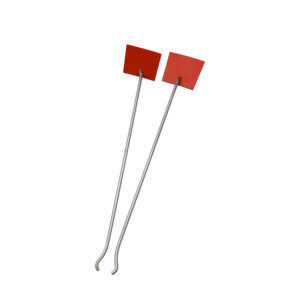
Pair of index arms for Windex® 15
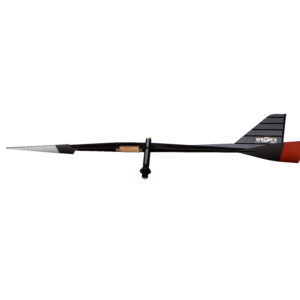
Vane unit for Windex® 15, complete
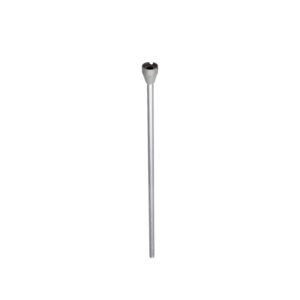
Supporting rod for Windex® 15
Sign up to our newsletter.
Make sure you get the latest news, updates and promotions from Windex, by signing up to our newsletter here below!
Email Address:
- Svenska ( Swedish )
- Italiano ( Italian )
- Español ( Spanish )
- Français ( French )
- Deutsch ( German )
- Account icon Log in

Wind Indicators
Windtrak™ 15 wind vane - sku 3150.
WindTrak™ wind vanes continue to offer exceptional performance at the best value of any wind indicator worldwide. The secret is in the sapphire je...
WindTrak™ 10 Wind Vane - SKU 3120
Led windtrak light for windtrak™ 10 and windtrak™ 15 - sku 3200.
Light up the reflector tabs and vane on your WindTrak™ for easy viewing at night with LED WindTrak Light. Waterproof and non-corroding silver part...
Deluxe Universal Masthead Mount - SKU 1705
Extend your WindTrak 10 Sport or WindTrak 15 vane away from masthead obstructions. The 13″ (33 cm) arm comes with hardware to allow for side or to...
WindTrak™ AV Antenna Mount Wind Vane - SKU 3160
WindTrak wind vanes continue to offer exceptional performance at the best value of any wind indicator worldwide. The secret is in the sapphire jew...
Air-Flow Tels - SKU 950
Lightweight, ripstop nylon Air-Flow Tels attach to sails with waterproof adhesive locator discs. No holes required. Tels show the air flow across t...
Wind-Tels™ Vane Set for Sail - SKU 1260
Port and starboard colored tales mount on any shroud sizes up to 3/8″ (10 mm). The unique method of attachment prevents sliding or fouling of your...
Telo-Cat™ - SKU 1450
Designed especially for catamarans, the Davis Telo-Cat™ is durable and highly visible. Installs on the headstay bridle in seconds; easily removed ...
Black Max™ Wind Direction Indicator - SKU 1295
Black Max is a versatile, high performance wind direction indicator that attaches quickly to the mast or boom. The tough, high impact plastic vane...
Spar-Fly™ - SKU 1310
Spar-Fly combines needle bearing balance, high impact plastic, and marine grade metals for unsurpassed sensitivity and durability. Spoiler holes i...
Blacksmith Sportboat Carbon Fiber Wind Vane - SKU 3186
Bring your sailing experience to a new level ~ Davis Instruments introduces Blacksmith Wind Vanes, made from super lightweight 3D carbon fiber and...
Blacksmith Crazy Kids Wind Vane - SKU 3180
Bring your sailing experience to a new level ~ traditional wind indicators tend to be fragile and easily bent or get broken. Not anymore! Davis In...
Blacksmith Horizontal Carbon Fiber Wind Vane - SKU 3188
Blacksmith olympic boat carbon fiber wind vane - sku 3184, j-base for windtrak™ 10 for side, top, or front of mast mounting - sku 3125.
Standard with the WindTrak 10, J-Base™ can be ordered as an option for WindTrak 15. Allows for side, top, or front mounting on most masts, on big ...
Extra Reference Tab Assembly for WindTrak™ 10 - SKU R3102
Extra Reference Tab Assembly for WindTrak™ 10.
J-Base for WindTrak™ 15 - SKU 3155
J-Base™ can be ordered as an option for WindTrak 15. J-Base allows for side, top, or front mounting on most masts, on big boats or dinghies alike. ...
Replacement Bird Spike for WindTrak™ 15 - R3150E
Replacement or add-on bird-proof spike for WindTrak 15 vanes. Extends another 10 inches (25cm) above the vane to discourage birds from landing.
Extra Wind-Tel Vane Set - SKU 1261
For use with product number 1260
Extra Vane for Telo-Cat™ and Black Max™ - SKU 1452
Replacement vane for Telo-Cat™ and Black Max. Tough high-impact plastic vane with visible trim markings.
Extra Spar-Fly Vane - SKU 1311
Extra Spar-Fly Vane for use with product #1310
Optimist Mast Pin Set - SKU 3182
Pin set for Optimist mast.
- Best selling
- Alphabetically, A-Z
- Alphabetically, Z-A
- Price, low to high
- Price, high to low
- Date, old to new
- Date, new to old
Checkmark icon Added to your cart:

- Sailboat Equipment
Wind Indicators

Tacktick Wireless Speed Depth Wind NMEA System

Tacktick Wireless Speed Depth Wind System w/ Triducer

Tacktick Wireless Vertical Wind Transmitter - (New Design)

Tacktick Wireless Multi Wind System with T112 & T120

Tacktick Wireless Wind Transmitter

Allen Brothers Cruising Flag Long Rod - Assort (Pack Of 10)

Ronstan Carbon Wind Vane Pro - Sportsboat

Ronstan Carbon Wind Vane Pro - Olympic

Davis Windex 15" Wind Indicator

WinDesign Oringinal 10" Hawk Wind Indicator

C Vane Wind Indicator for Sunfish

Davis Windex 10" Wind Indicator

C Vane Masthead Wind Indicator

Ronstan Wind Vane Pro - Crazy Kids

Pro wind indicator blue Windesign Sailing

Ronstan Wind Vane, Arrow Style
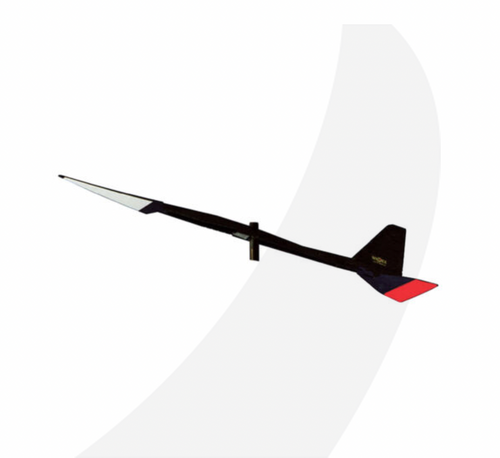
Davis Windex 10 Spare Vane

Optiparts Standard Wind Indicator

WinDesign Pro Wind Indicator

Allen Brothers Racing Flag Short Rod - assorted colors / individual

- EU STORE, IRELAND BASED | WORLDWIDE SHIPPING | FREE DELIVERY TO IRL & NI FOR ORDERS OVER €80

Wind Indicators & Sailing Burgees
- SAILBOATS & PARTS

Little Hawk Mk2 Wind Indicator - Podium Edition
Little Hawk

Windex Dinghy 6 Wind Indicator - Mast & Spar Mount

Optiparts Standard Wind Indicator - 5mm Shaft

Optiparts Optimist Pro Wind Indicator - Blue

Optiparts Wind Indicator Clip Pennant Holder - 5mm Shaft

Optiparts Optimist Pro Wind Indicator - Red

Square Pennant Racing Burgee - Large
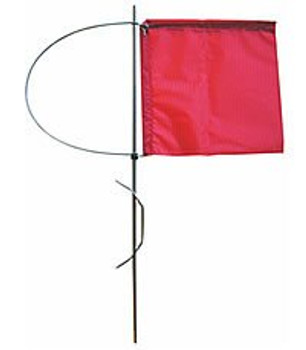
Square Pennant Racing Burgee - Medium

Square Pennant Racing Burgee - Small

Little Hawk Mk1 Wind Indicator

Windex Night Illuminaton Light

Windex XL Wind Indicator

Windex 15 Wind Indicator
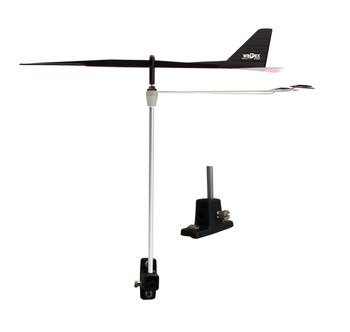
Windex 10C Wind Indicator - New Model

Windex Dinghy Wind Indicator

Little Hawk Race Wind Indicator

Little Hawk Mk2 Wind Indicator

V-Tronix Hawk Wind Indicator Kit

V-Tronix VHF Antenna w/ Hawk Wind Indicator - 0.9m

- Nautic House Marsh Rd Skibbereen Co. Cork Ireland P81 R230
- Call us on 021 4315700
About CH Marine
- Stores & Hours
Customer Service
- Brexit Notes
- Privacy Policy
- Returns Policy
- Terms & Conditions
- Shipping & Delivery Times
- Gift Certificates
- WEEE Recycling
Popular Brands
- International
- See all brands here
- Subscribe to our newsletter

Free Shipping Over $99* - 366 Day Returns - Dedicated Customer Support

- Call Us +1-503-285-5536
- Sign in & Register
- Recently Viewed
- General Parts
- Accessories
- Wind Indicators
Windex Dinghy 6 Wind Indicator
- Create New Wish List
Write a Review

Frequently Bought Together:

Description
The Windex Dinghy 6 is the newest addition to the Windex Wind Indicator family. It is the perfect wind indicator for smaller dinghies/multihulls or other fast sailing crafts.
- Windex® 6 will be the perfect choice for all dinghy’s and smaller multihulls.
- The flexible mounting do it very flexible. Fits mast and bow spirit from 45-70 mm diameter. You can chose from several way of mount the Windex® 6 on i.e. Optimist, Laser or multihulls.
- Windex® wind vanes for sailors that need exceptional performance at the best value of any wind indicator worldwide. The secret is in the sapphire jewel suspension bearing, large fin-low inertia vane makes it very precise.
- Windex® wind vanes remain the top performing wind indicators in the world and offers exceptional performance with great value.
- Provides accurate apparent wind direction information for all type of small fast sailing boats.
- Sapphire jewel suspension bearing makes the device sensitive in light air and responsive in heavy air.
- Vane length 150 mm (6”)
- Total length/height depend on how You mount it 300 mm (12”)
- Weight 17 gr (0,6 ounces)
- It has a rubber cord for fitting on tubes from 45-70 mm
Product Reviews
Shipping & returns.
Delivery Info: Enjoy Free Standard Shipping on most orders* to the Continental United States over $99. Our Standard Shipping method utilizes USPS, UPS, and FedEx to send packages near and far. Oversize/Freight shipping (where applicable), Expedited Shipping (where available), and rates to other destinations will be calculated at checkout.
See our Shipping Page for more information (and exceptions).
Returns Info: Your 100% satisfaction is our goal - we want you to love your sailing gear, but if something doesn't work out, we accept returns on most new, unused items*. Returns can be made within 366 days (1 year + 1 day) of your original order date. Exceptions include (and are not limited to) cut line, Rig Shop products, special order items, numbered sailors, and items used or worn sailing.
See our Returns Page for more information.
Related Products

Windex Dinghy Wind Indicator
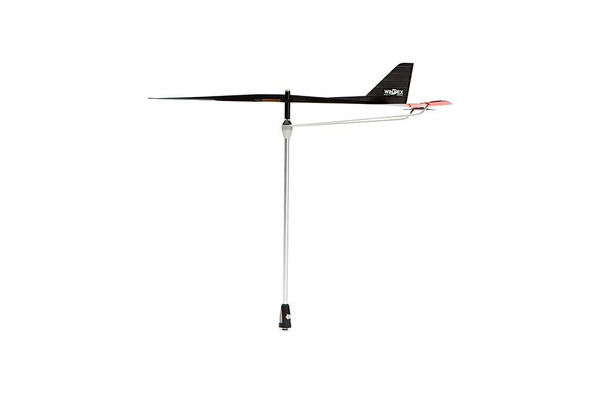
Windex Sport 15 Wind Indicator

Hawk Wind Indicator
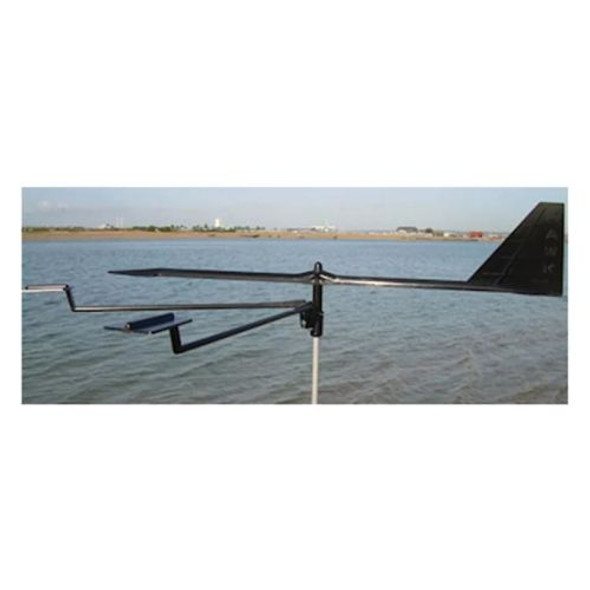
Great Hawk Wind Indicator

Davis Blacksmith Wind Indicator (Large)
Subscribe to our newsletter.
Sign up for our newsletter to receive exclusive discounts, new product announcements, and upcoming sales.
HEAD OFFICE: Unit 15, 20 Narabang Way Belrose NSW 2085 AUSTRALIA ABN: 72 626 908 585
- 02 8015 2416
New Customer
Registering provides you with personalized services, including: wish list, order status and promotions.
- Gift Certificates

- Our Location
- Product Categories
- Afterpay Boating Accessories
- Zippay Boat Accessories
- Shipping & Returns
- Belrose Metro Store
Note that some Baintech, CTEK, GME & Vetus products are suffering shipping delays due to issues at the suppliers' warehouses.
Wind Instruments
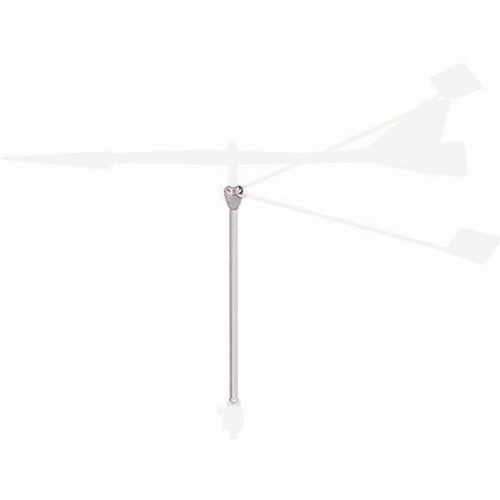
Windex Wind Indicators
WINDEX 15 Supporting Rod Only
Spare supporting rod for the WINDEX® 15 Part Number Weight RON-WX15-R 40g

WINDEX 15 Mast Socket Only
Spare mast socket for the WINDEX® 15 Part Number Weight RON-WX15-S 10g

WINDEX 15 Wind Indicator
WINDEX® 15 is the perfect choice for all family and racing boats from about 29 to 40 feet. The WINDEX® Wind Indicator offers exceptionally good performance. The secret is the needle that rests in a safari layer, which means that WINDEX® 15...

WINDEX 15 Wind Vane Only
Spare wind vane for the WINDEX® 15 380mm (15)in. vane length Part Number Weight RON-WX15-V 40g

WINDEX 15 Index Arms Only
Spare index arms for the WINDEX® 15 Part NumberWeight RON-WX15-A 40g

Raymarine i50 & i60 Wind, Speed, Depth - Pack of 3 Instruments & 3 Transducers
Raymarine i50 & i60 Wind, Speed, Depth - Pack of 3 Instruments & 3 Transducers Stylish displays for sailboaters! The new i60 instruments are designed to complement the all new Raymarine cSeries and eSeries multifunctional displays. Designed...

Garmin Mast Bracket (gWind Race)
Garmin Mast Bracket (gWind Race) Secure your gWind Race mast securely with this bracket. Part Number GMN-010-12117-07

Garmin Connector Adapter Cable (gWind)
Garmin Connector Adapter Cable (gWind) Use our connector adapter cable to retrofit your gWind transducer for the Nexus network using your existing Nexus mast cable. Part Number GMN-010-12117-02

Garmin gWind Wired Transducer Only
Garmin wired gWind Transducer The gWind transducer features twin-fin technology with 3-bladed propeller for more accurate TWS in lighter air while the twin-fin design gives a more stable TWA. The 3-bladed propeller, unlike a cups design, is always...

Garmin gWind Wireless 2 Transducer
Eliminate Wires Through Your Mast An easy-to-install solution that eliminates running wires through masts up to 50 feet 3-bladed propeller for more accurate wind speed in lighter wind conditions Twin-fin design gives a more stable wind angle Solar...

Garmin GNX Wind Marine Instrument
Garmin's Affordable, Dedicated Wind Instrument Glass-bonded backlit monochrome LCD display lens avoids fogging Large, easy-to-read black digits on white or customizable background colors for high contrast and high visibility in all lighting...

Garmin NiMH Battery (gWind Wireless)
Garmin NiMH Battery (gWind Wireless) The internal batteries of the gWind Wireless are continuously charged by a small solar panel integrated on the transducer arm, and have a life of around 3 to 4 years. But when the time comes to replace them, they can...

Garmin Wind Propeller
Garmin Propeller - Don't let a missing propeller keep you from receiving accurate wind data. Garmin's replacement propeller ensures you can maintain the twin-fin technology with 3-bladed propeller our gWind™ family of transducers are known...
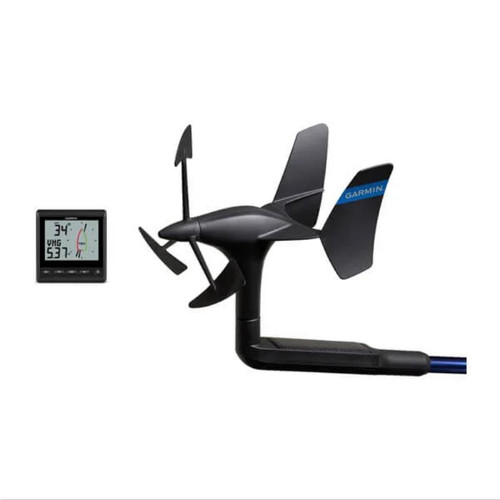
Garmin GNX Wireless Wind Pack
Garmin GNX Wireless Wind Pack The Information You Need to Set Sail Includes GNX™ Wind instrument and gWind™ Wireless 2 transducer GNX Wind provides 2 data fields and a digital wind rose to simultaneously display true and apparent wind...

Garmin Mast Bracket (gWind / gWind Wireless)
Garmin Mast Bracket (gWind / gWind Wireless) Secure your gWind and gWind Wireless mast securely with this bracket. Part Number GMN-010-12117-06
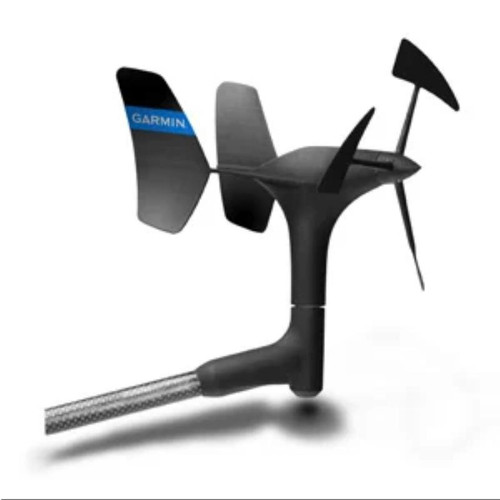
Garmin gWind Wired Transducer
Three-bladed propeller for more accurate True Wind Speed (TWS) in lighter air Twin-fin design gives a more stable True Wind Angle (TWA) Optic reading technique for superior performance at low wind speeds with excellent linearity GND 10 black...

Garmin gWind Race Wired Transducer
Designed for racing sailboats 3.3 feet (1 meter) straight pole raises the wind transducer above the mast to remove turbulence errors from the sail wash Three-bladed propeller for more accurate True Wind Speed (TWS) in lighter air twin-fin design...

Windward Wind Indicators
Windward Wind Indicator - Dinghy Racing Model
Their lightweight, high quality construction gives long life and accurate performance. Supplied complete with reference arms, mast top mount and foredeck mount bracket. Part Number Vane Length RWB-179 200mm

Clip-On Wind Indicator
Perfectly suited to laser and other small sail craft. Simply and securely clips onto the mast with the integral clip-on bracket provided, for fast and accurate wind direction readings 100% accurate in wind over 2 knots 200mm vane length Made in...

Windward Wind Indicators - Economy Dinghy Model (Single)
The Windward 200E is supplied without reference arms. It is ideal for small racing dinghies and is 100% accurate in winds over 2 knots. Part NumberPack SizeVane Length RWB-182 One 200mm

IMAGES
VIDEO
COMMENTS
Windex is a Swedish invention from 1964 that provides instant and accurate wind information at all points of sail. It offers different models for various sized boats, as well as a new combination with a VHF antenna.
In this case, the vane of the Windex wind indicator will be pointing to the port side of the boat, and the 9 o'clock arm will be pointing down towards the water. The 3 o'clock arm will be pointing up towards the sky. If the boat is on a starboard tack, the wind will be coming from the port side of the boat.
Improve sailing performance with a wind indicator for your sailboat. A sailboat's wind vane, also called a spar or masthead fly, shows in real-time the direction of the apparent wind, which you can use to trim your sails and sail most efficiently. Available in a variety of sizes, wind direction tools are a must for sailboats and sailing dinghies.
This compact sailboat wind direction indicator comes in a bright red color and has both a top and side mounting option. It measures 15 inches long, is highly visible, and weighs an astonishing 1.25oz for a highly responsive level of accuracy even in light wind conditions. The Spar Fly sailing wind vane is intended for sailing dinghies or small ...
Although a masthead indicator is the norm, a deck-level indicator also offers advantages. Non-sailing crew appreciates them when asked to turn the boat into or away from the wind while hoisting or dousing the sail, for anchoring, or, in reality, any turn at the wheel when a steady course relative to the wind is required.
Most wind speed indicators consist of a digital display that shows wind speed in knots to the nearest 1/10 of a knot. Wind direction can be displayed using digits (from 0-180° port and starboard) or a pointer that turns through 360°. ... Most sailboats rely upon a masthead wind transducer assembly that consists of an electronic wind vane ...
Wind direction indicators, also known as wind tells, are devices or visual cues used by sailors to determine the direction and strength of the wind while out on the water. They provide valuable information for sail trim, tacking, boat handling, and overall navigation. Wind direction indicators come in various forms, a.
Traditional methods. A wet finger. The sailor himself is the best indicator. To determine the direction of the wind by using a wet finger is one of the easiest ways. Wet your finger and hold it up. The side of the finger that will dry faster and feel cold as compared to another side shows the direction of the wind.
In total more than 1,500,000 WINDEX Wind Direction Indicators have been sold over the last 45 years. The different WINDEX models are found at the top of masts on every type of sailboat from Americas Cup boats to racing dinghies, and everything in between. It is one of the most well known and recognised yachting products. The inventive and ...
Single sail boats, such as Lasers and Optimus dinghies often clamp wind indicators on the forward side of the mast (see Practical Sailor, January 2018, Top Notch Wind Indicators). Without a jib to interfere with windflow or to luff at every wind shift (thus serving as a wind vane), they give a real-time estimate of wind direction.
Wind Indicators. We offer wind indicators manufactured by Hobie, C-Vane, Optiparts and more. We have full set wind indicators or if you just need a replacement vane, we have those too! ... The WINDEX Dinghy Wind Indicator s designed for dinghies and smaller sailboats with quick attachment for the mast. Ideal for boats 10 to 20 feet in length.
Telltales or wind indicators attached to the shrouds are great for sensitive light wind sailing, as well as making sure the wind is at the right angle when wing on wing sailing downwind. Finally, even with a state-of-the-art electronics system, nothing beats the responsiveness and effectiveness of quality tell tales on the sails. When sailing ...
WINDEX 15 is the perfect choice for all family and racing boats from about 29 to 40 feet. The WINDEX Wind Indicator offers exceptionally good performance. The secret is the needle that rests in a sapphire layer, which means that Windex 15 finds the shifts even in extremely weak winds. Reflector tape on the vane and tacking tabs make Windex® 15 easy to see day and night. Windex® vanes are ...
Bring your sailing experience to a new level ~ traditional wind indicators tend to be fragile and easily bent or get broken. Not anymore! Davis In... View full details $32.99 | / ... Bring your sailing experience to a new level ~ Davis Instruments introduces Blacksmith Wind Vanes, made from super lightweight 3D carbon fiber and...
Order online Sailboat Wind Indicators. WE SHIP WORLDWIDE: More Info. Toggle menu. FREE SHIPPING* US Continental (min order $98) International (min order $750) * Does not apply to oversized items. Compare ; Gift Certificates; My Account; Search. 877-240-8352. Search. Our Brands . All Our Brands; Allen Brothers .
Davis Ripstop Nylon Air Flow Tels with Waterproof Adhesive Discs for Sailboats (2 Pack) Set of 28 Tels - Sailing Wind Indicators - Easy to Use Sailing Indicators - Wind-on-The-Sail Indicators. 4.8 out of 5 stars 19. $23.98 $ 23. 98. FREE delivery on $35 shipped by Amazon.
This wind indicator from Windesign Sailing has a stronger vane-arm which is accurately balanced and performs amazing sensitive. The vane arm of both low friction indicators are now attached to the needle with a new positive locking system which prevents loosing the vane arm. Shaft fits in all Opti mast top pins; Previously known as EX1242
Garmin GWS 10 Wind Vane - 010-11120-00. $38.99. Shop Wind Indicators for boats, yachts, and other marine vessels at Defender. Get fast delivery and free shipping on eligible orders over $99.
This Optiparts Wind Indicator Pro from Windesign Sailing has a stronger vane-arm which is accurately balanced and incredibly sensitive. The vane arm of both low friction indicators are now attached to the needle with a new positive locking system which... OPEX1243 €15.95. Add to Cart ...
The Windex Dinghy 6 is the newest addition to the Windex Wind Indicator family. It is the perfect wind indicator for smaller dinghies/multihulls or other fast sailing crafts. Windex® 6 will be the perfect choice for all dinghy's and smaller multihulls. The flexible mounting do it very flexible. Fits mast and bow spirit from 45-70 mm diameter.
Stainless Steel Wind Direction Indicator. Don't Pay $65.20. Our Price $56.40. Add to Cart. Wind indicators & instruments are a vital part of sailboat handling. Select from a range of quality sailing wind indicators at The Boat Warehouse.
Durable Stainless Steel Red Boat Flag, Lightweight Wind Indicator for Sailboat Yacht with Nylon Material (140x120mm / 5.51x4.72 in) $15.99 $ 15. 99. 5% coupon applied at checkout Save 5% Details. FREE delivery on $35 shipped by Amazon. Nautos - H302 OW - Wind Indicator - PNP302 - Optimist.